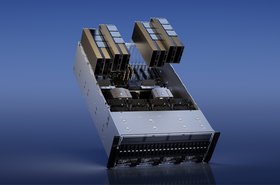IBM i (previously known as OS/400, the operating system for IBM's Power Systems) has a long history and continues to be a mainstay in industries like banking, retail, manufacturing, distribution and finance today. Despite its age, it will likely continue to be around for some time as IBM has developed a full road map for the venerable operating system.
In addition, the 2021 IBM i Marketplace Survey from Help Systems found that 73 percent of respondents used IBM i for over half of their core business applications and 67 percent planned to either maintain or grow their existing IBM i footprint, showing strong customer interest.
Migration is often just talk
Still, organizations will often talk about migrating away from the platform to reduce costs, as part of a data center exit, or because the universe of IT pros who are experienced with it continues to dwindle. But that talk rarely translates into action due to a number of factors:
- Customization:
Many IBM i applications have been heavily customized over the years and would be hard to refactor without specialized solutions. The refactoring process would take years and have a decent risk of breaking important applications or undoing helpful customizations. The chances of this happening increase significantly if the engineers who worked on those applications through their lifetime are no longer at the company. - Still Easy to Upgrade:
Even applications written in the 1980s can run on the latest IBM Power hardware, providing a straightforward way to get a performance boost without recoding or refactoring. - Complex Migrations:
Migrating an IBM i application onto another platform is complex, slow and painful, taking anywhere from 3-5 years. In fact, it’s so complex I’ve seen IBM i customers intent on migrating off the platform continue to invest in tools to monitor, manage and secure it - even though those tools may be obsolete after the migration is complete! - Inertia:
IBM i applications tend to be decades or more old and crucial to business operations (such as an enterprise ERP system). IT often has an “if it isn’t broken, don’t fix it” attitude towards these systems, encouraged by the fact that the IBM i engineer population is aging. This is enough of an issue that IBM launched a “Fresh Faces” campaign to get more IT pros trained on the platform and prevent a future skills shortage.
IBM i also has some not inconsiderable advantages. For instance, it offers a number of mature high availability options that don’t have equivalents on other platforms. These allow for role swaps between machines to ensure availability during upgrades, maintenance, application issues or for disaster recovery. IBM i is also highly securable thanks to many features built into the operating system and many mature third-party tools and utilities. There are savings in staff as well; IBM i requires far fewer sysadmins to maintain than, say, an equivalent Windows Server implementation, so applications can be run with smaller IT teams. And finally, IBM i on Power is renowned for its survivability, which is why it is favored by industries like banking that prioritize resilience. Convincing these risk-averse organizations to gamble on an unfamiliar prospect is difficult at best.
Keeping i and gaining the Cloud
So what is an enterprise to do if it wants to gain some of the benefits of cloud infrastructure without the cost, time and potential disruption of refactoring IBM i applications?
One option is to migrate IBM i applications to run natively “as is” in the public cloud. The amount of work required, and the technology used for this vary based on the workload. For example, if no downtime is allowed, a logical replication tool can be used. If some downtime is possible, perhaps a save/restore tool is best. In most cases a combination of the two will work. The cost of these tools and the work required is usually far less than the expense and risks of refactoring or rearchitecting and are outweighed by the benefits of running the application in the cloud.
To minimize risk, IT teams should first lift and shift existing IBM i applications to the cloud without changing them whatsoever. Create the same number of VMs/LPARs, same memory/disk/CPU allocations, same file system structures, same exact IP addresses, same exact hostnames, same network subnets, etc. This preserves the benefits of IBM Power listed above, while allowing the organization to take advantage of pay-as-you-go pricing (plus discounts for committing to between one and three years upfront) and cloud flexibility. It also minimizes risk during the migration.
If organizations do want to ultimately replatform out of IBM Power, they can now begin to replace their software with cloud-native equivalents piece by piece – for example, replacing an Oracle database with CosmoDB in Azure without touching the rest of the application. By lifting and shifting to the cloud first and replatforming at a controlled pace, the organization faces less risk overall. Problems start to happen when IT tries to do too much at once!
But for many organizations, once you’re in the cloud, replatforming doesn't make sense. Simply running the IBM i application in the cloud without replatforming or refactoring keeps many of the advantages of IBM i while allowing IT to enjoy the benefits of cloud flexibility. Not only will they save on costs, but IT will also have the capability to clone logical partitions, which allows IBM i to slot nicely into many DevOps disciplines while providing a modern alternative to high availability and disaster recovery. The reasons for staying with IBM Power are valid and the future of the platform remains strong - but that doesn't mean users are locked out of using the cloud.





